Reel Talk: 12 Mistakes You're Probably Making When Cooking Fish
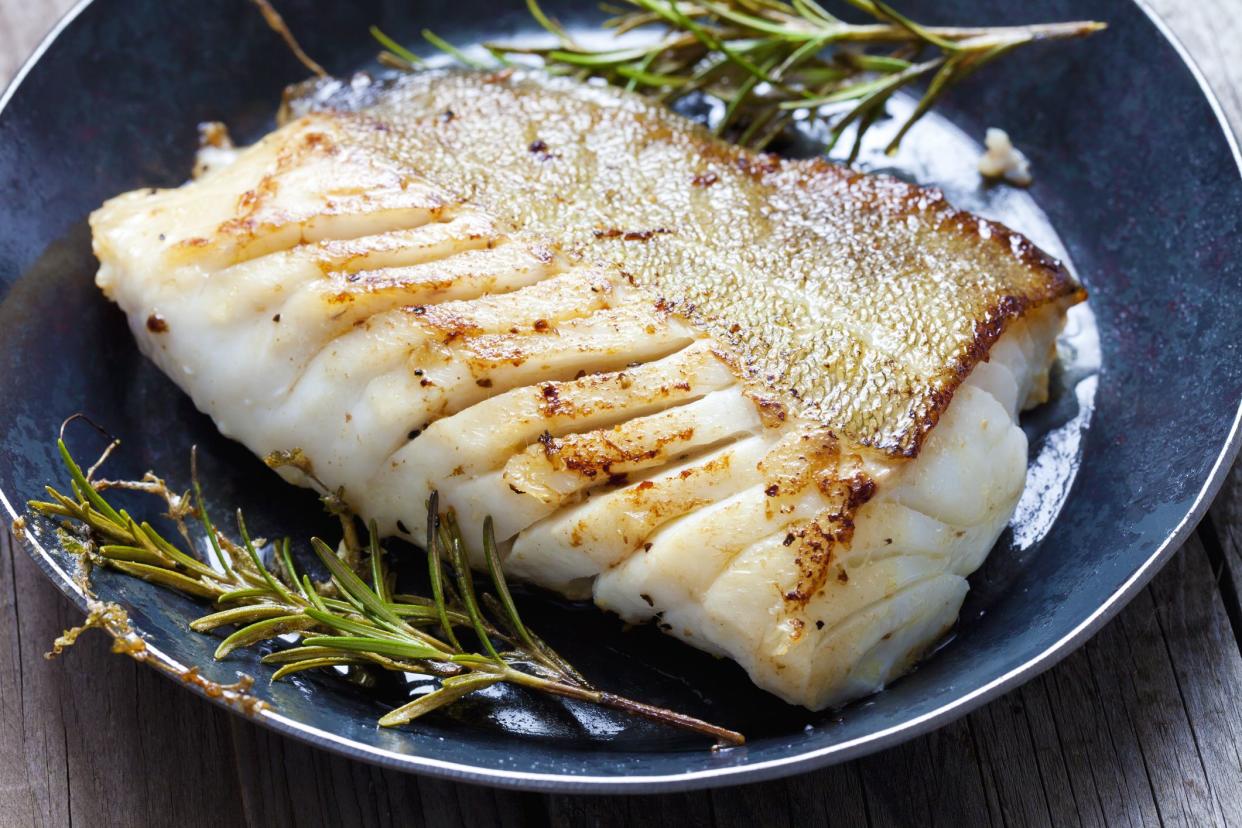
Fishy Business
Tired of eating dry and tasteless chicken? We are, too. But what if we told you that fish is the way to go? Before you shake your head in disagreement, fish — when cooked properly — can taste equally as good (if not better) than other proteins, plus it boasts a lot more health benefits compared to other meats. Rich in omega-3 fatty acids, lean protein, and essential nutrients like vitamin D and selenium, fish also supports heart health, brain function, and overall wellness.
But preparing and cooking fish can be tricky, which can result in a meal that's lacking in texture and flavor. That, or it's plagued with an off-putting "fishy smell." (Yuck.)
Don't worry, though: We've got you covered with these 12 common mistakes that people make when cooking fish — plus tips on how to avoid them — so you can bring your dishes to new heights.
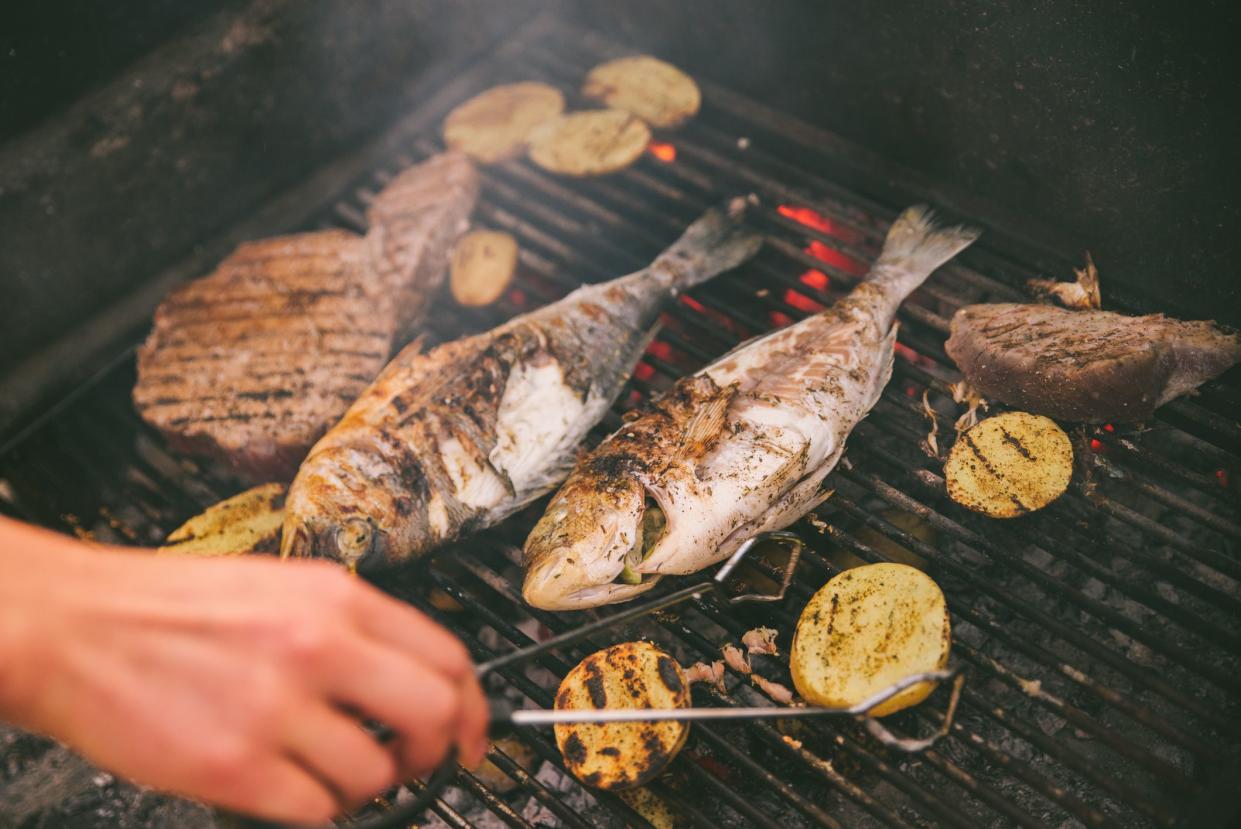
1. Not Heating the Pan or Grill Enough
A cool pan or grill can cause fish to stick, become soggy, or cook unevenly. To avoid dealing with a crumbly mess, make sure the cooking surface is hot enough by letting it preheat thoroughly; this will help the fish sear quickly and seal in all the flavors. A nifty trick to check whether your pan is hot enough is to add a few drops of water; if it evaporates on contact, the temperature is just right for grilling or searing.
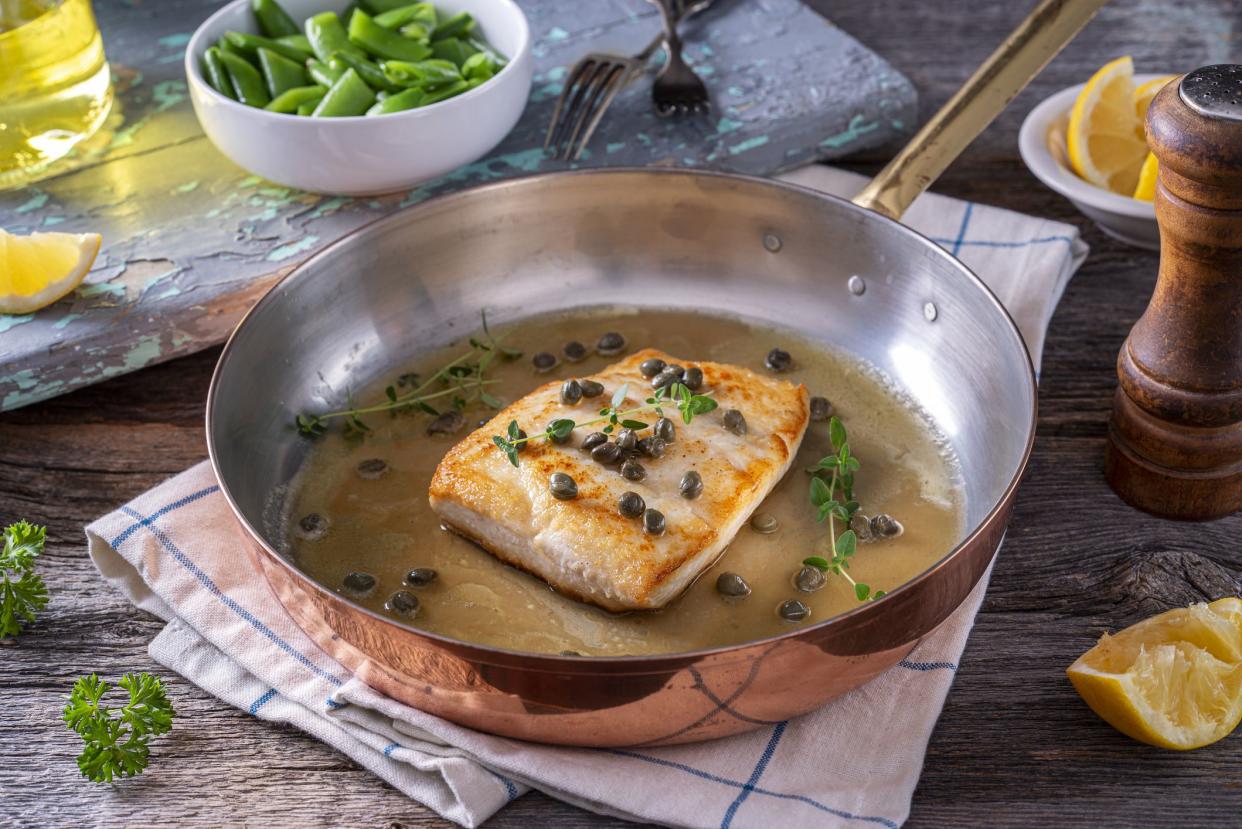
2. Overcooking
Due to its delicate nature, fish cooks quickly and can easily become dry and tough if overcooked for even a few seconds. To avoid ending up with rubbery fish, keep a close eye on the cooking time (about 2-3 minutes on each side depending on the cut and thickness), and remove it from the heat once its color turns opaque and starts to flake. You can also use a fork to test for doneness; if it separates easily, it's ready to go!
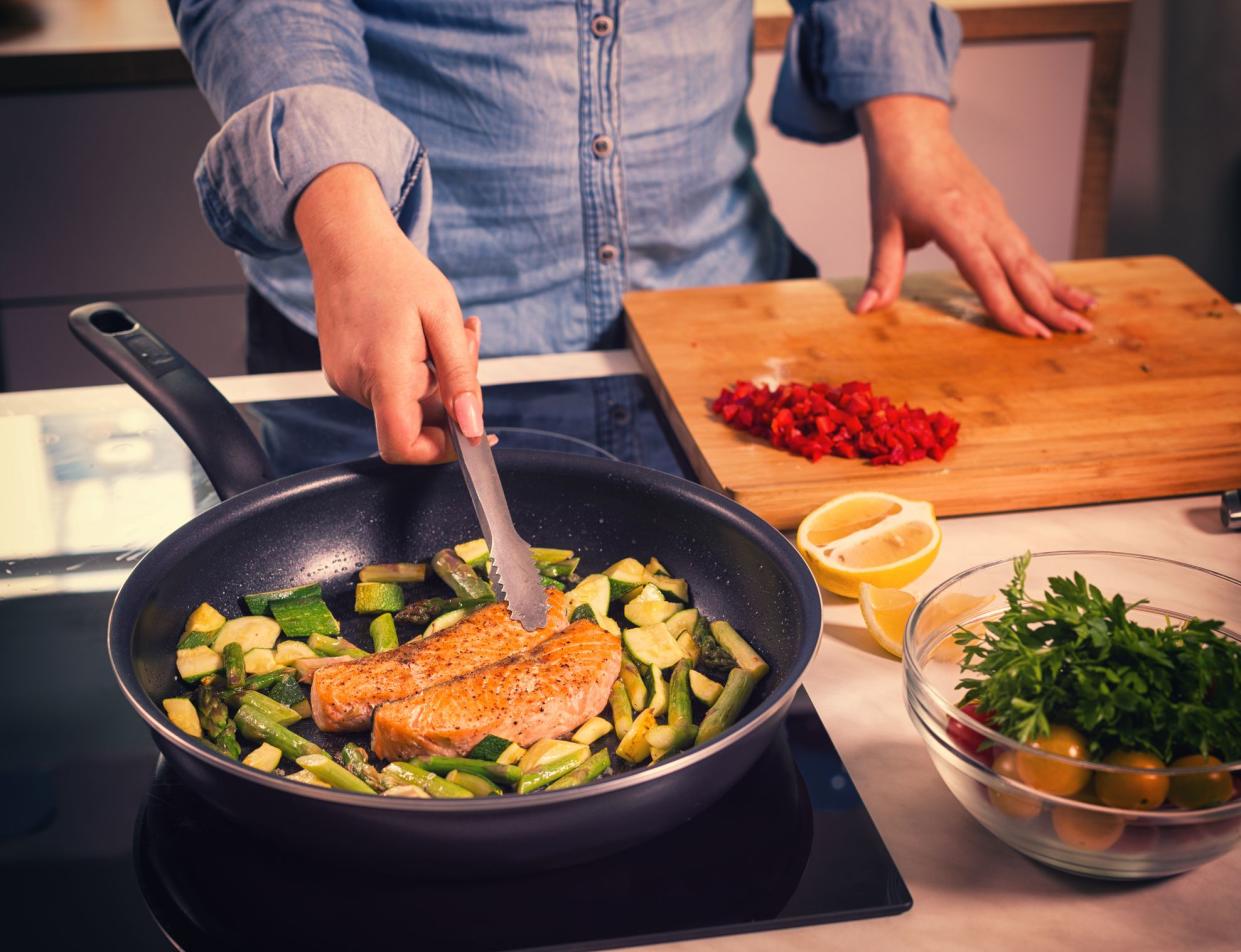
3. Flipping Too Often
While it can be tempting to flip and move the fish around while it's in the pan, frequent flipping can actually cause it to break apart and cook unevenly. Instead, let the fish cook undisturbed on one side until it's golden brown, and then flip it just once to finish the other side. Remember: Flip it only once. This will help maintain its structure and prevent the texture from breaking apart or turning chewy.
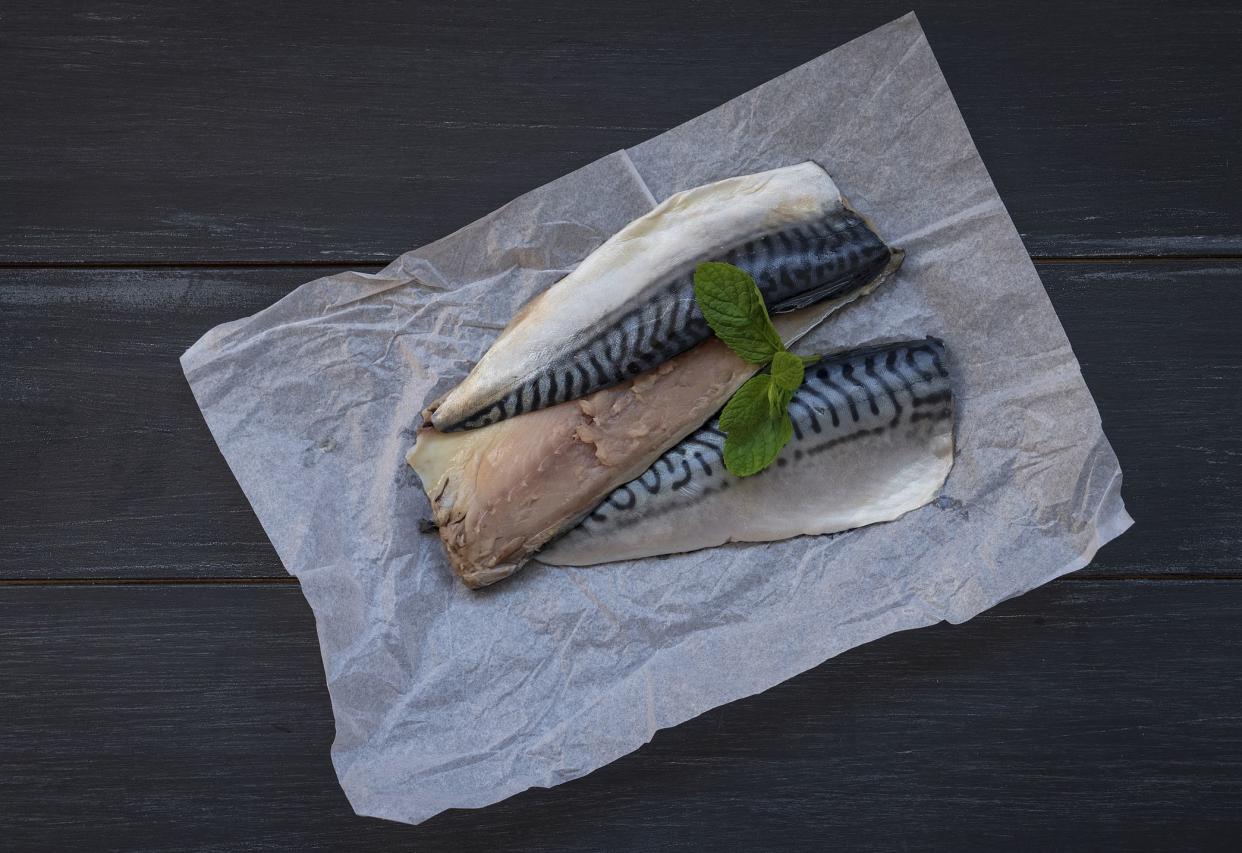
4. Not Drying the Fish Before Cooking
Since excess moisture on the surface of fish can turn to steam when heated, this can cause your filet to turn mushy once cooked. Or it can prevent it from achieving that slightly crispy and delicious golden brown exterior. To avoid this, remember to thoroughly pat down and dry your fish with paper towels before seasoning and cooking. This will help enhance its texture and flavor, especially when pan-searing.
Related: These Are the Best (and Worst) Fast-Food Fish Sandwiches
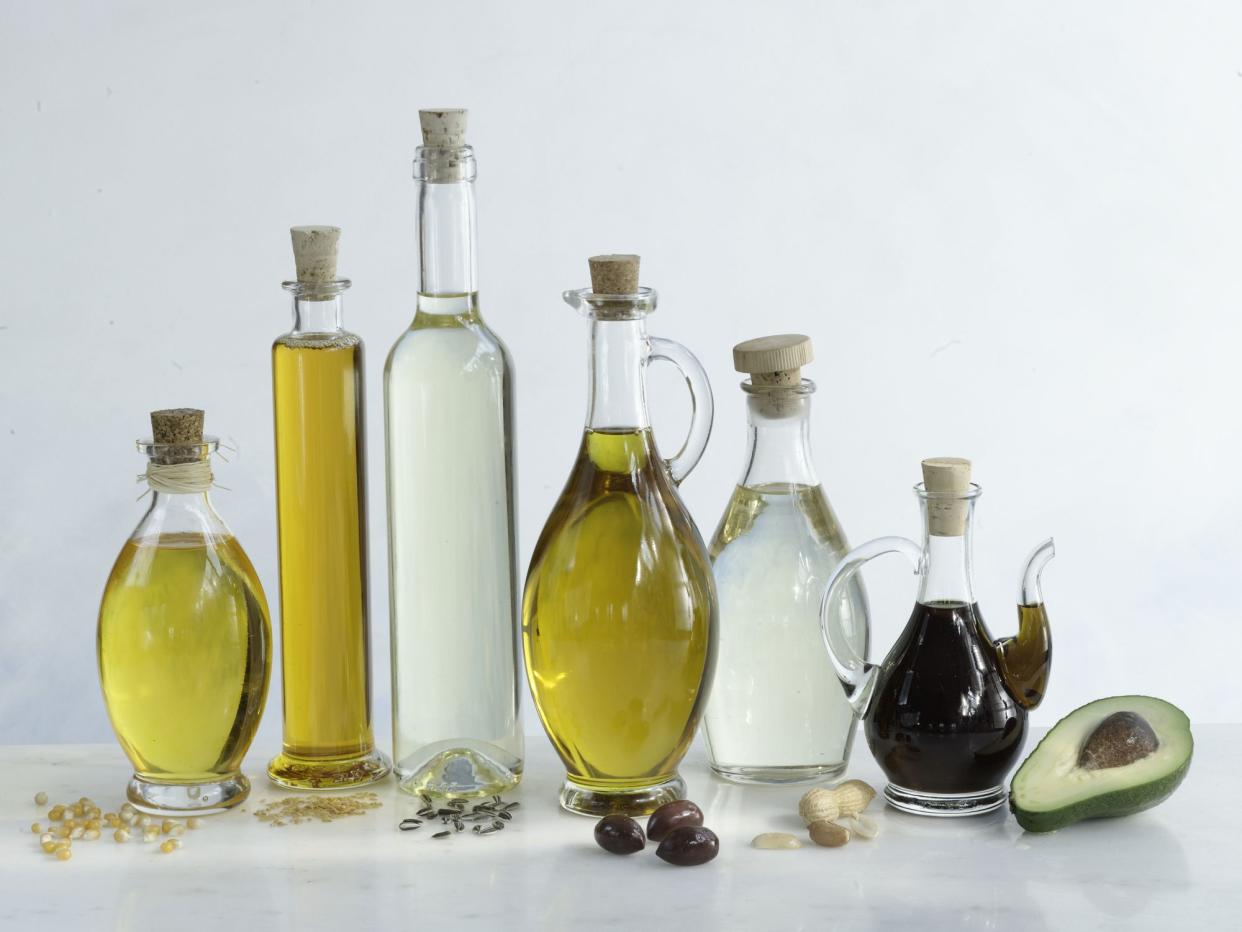
5. Using the Wrong Cooking Fat
Unbeknownst to many home cooks, the smoking point of the fat you choose can make a big difference. This is because a fat that burns at a lower temperature, like olive oil, can impart a burnt taste to the fish (or any other dish). As such, oils with higher smoking points, such as avocado, canola, or grapeseed oil, are ideal for frying or searing fish. Butter can also be used for flavor in a gentler, basting cooking method, or mixed with oil to raise its smoke point for searing.
For more savvy cooking tips and other life hacks, please sign up for our free newsletters.
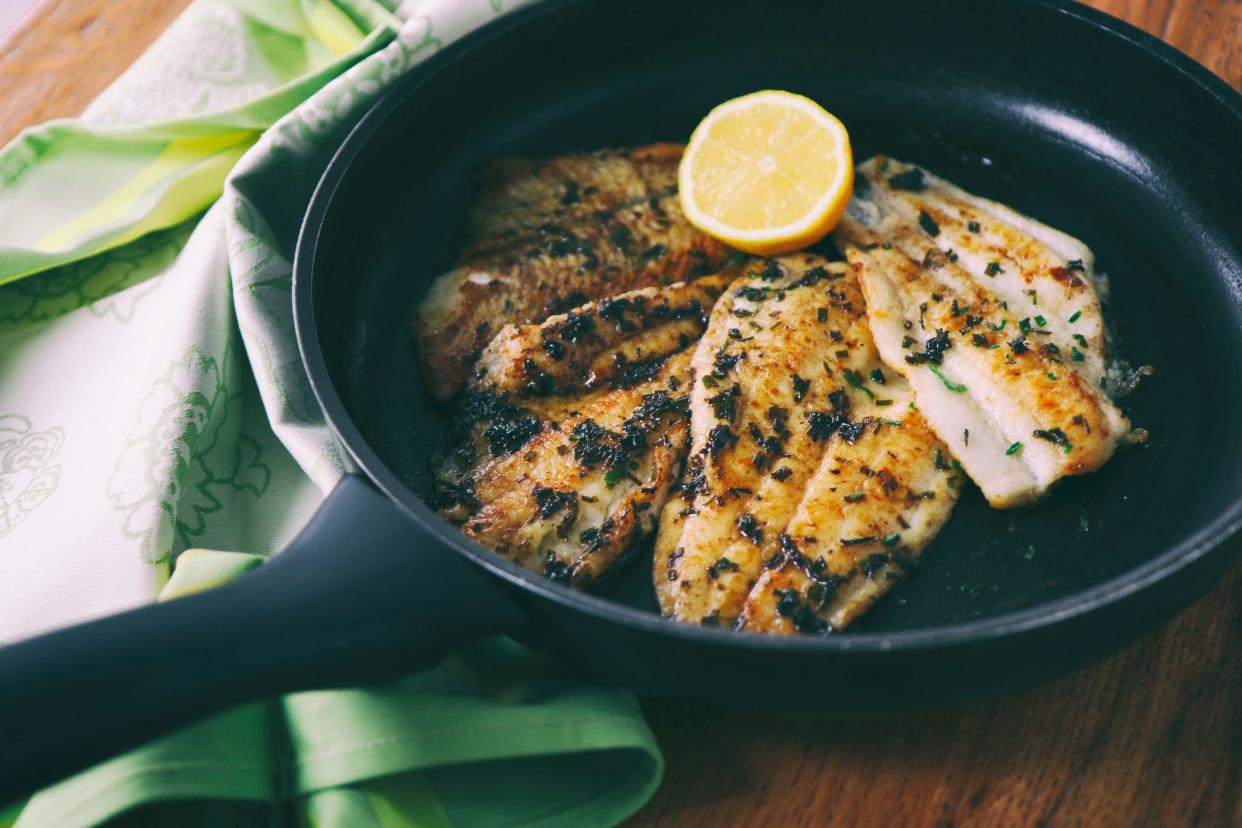
6. Crowding the Pan
Cooking too many pieces of fish in one pan can lower the temperature of the pan's surface, which can result in uneven cooking or a steaming (rather than searing) effect. To prevent this, remember to leave enough space around each piece of fish to allow the heat to circulate and cook the protein evenly. While this might mean having to cook in batches, trust the process; it will result in better texture and flavor.
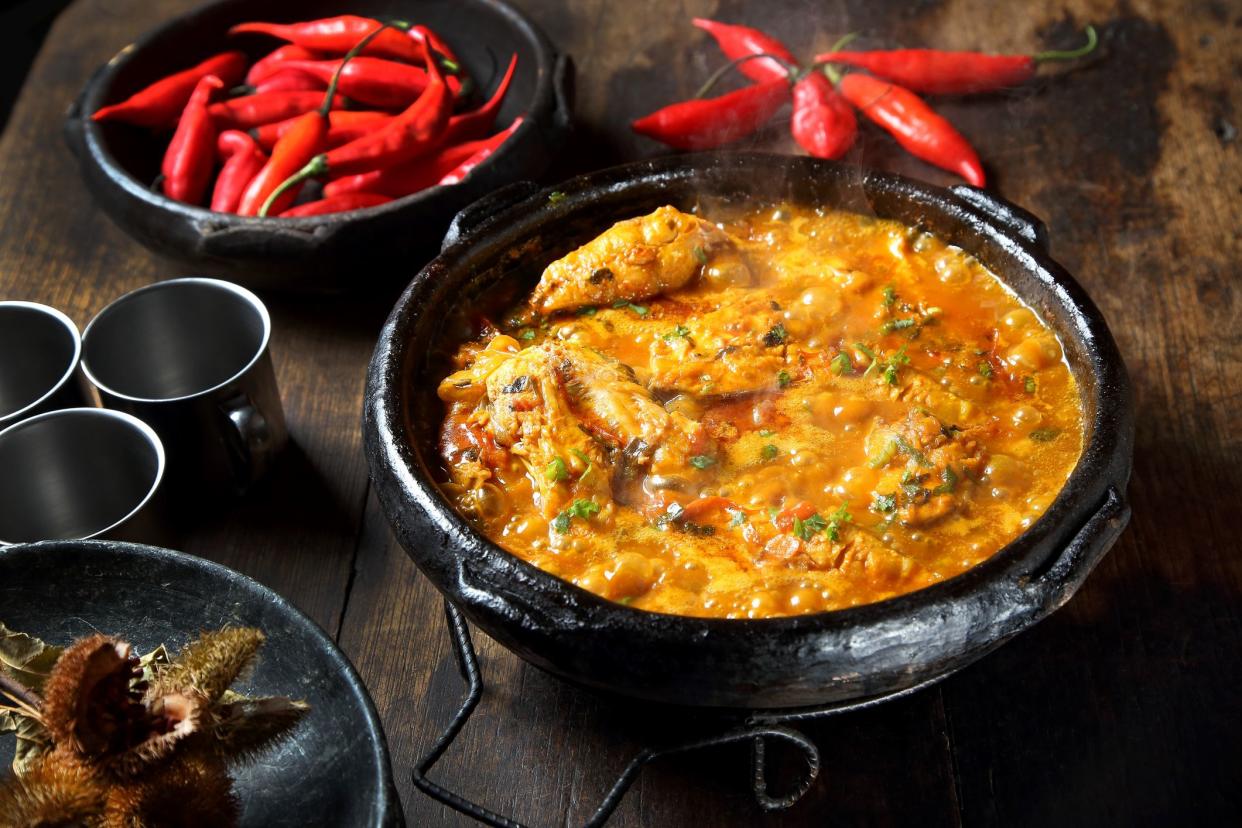
7. Cooking at Too Low a Temperature
While a gentle heat might seem safer, cooking fish at too low a temperature can make it turn rubbery or leathery with an unappetizing texture. A medium or higher temperature is typically preferred to achieve a quick sear that locks in flavor and prevents fish from turning mushy. As always, adjust the temperature as needed based on the thickness and type of fish, as well as the potency of your stove or grill.
Related: 25 Kitchen Mistakes You're Probably Still Making
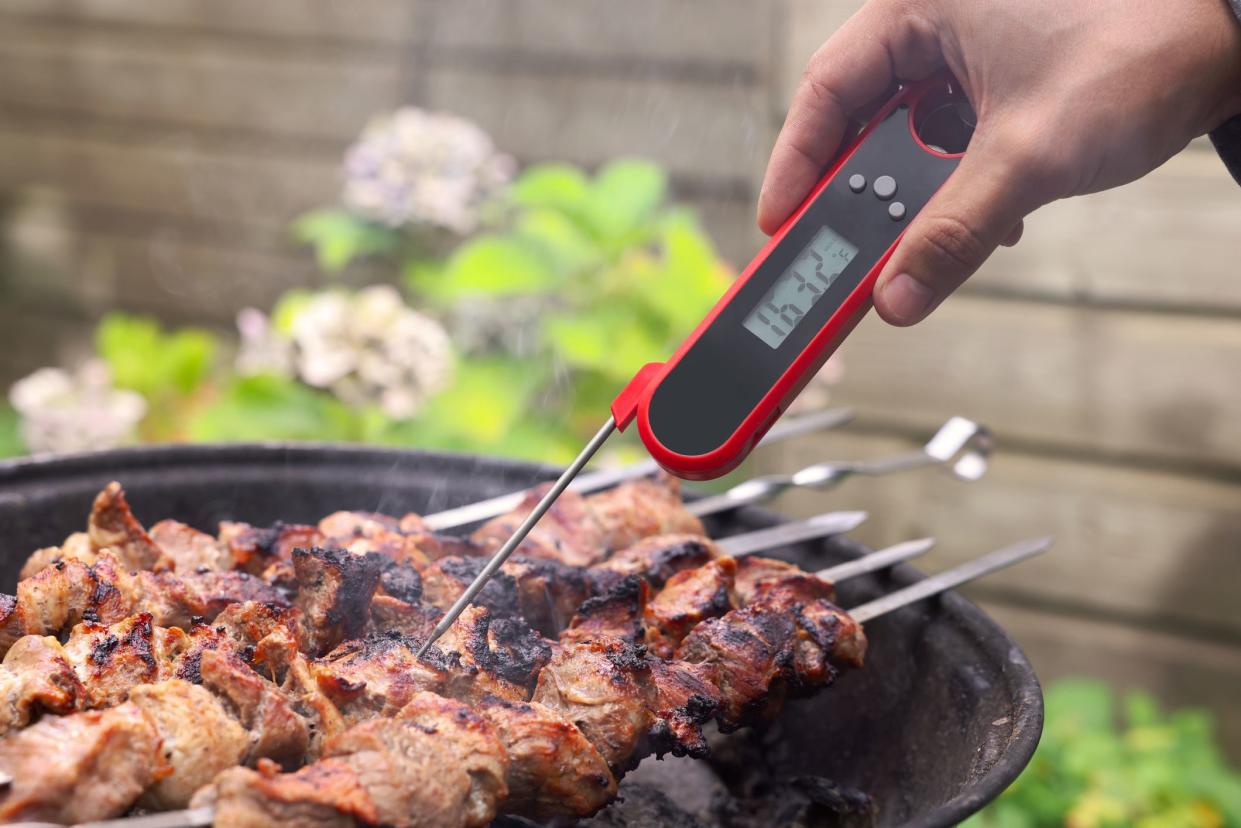
8. Not Using a Meat Thermometer
Never trust people that claim to just know when the meat is done cooking. Estimating or guessing doneness often results in overcooked fish, which, as mentioned above, is a major no-no. Investing in a meat thermometer (less than 20 bucks for a highly-reviewed one on Amazon) can help you accurately determine when your fish has reached the ideal internal temperature of 145 F (63 C).
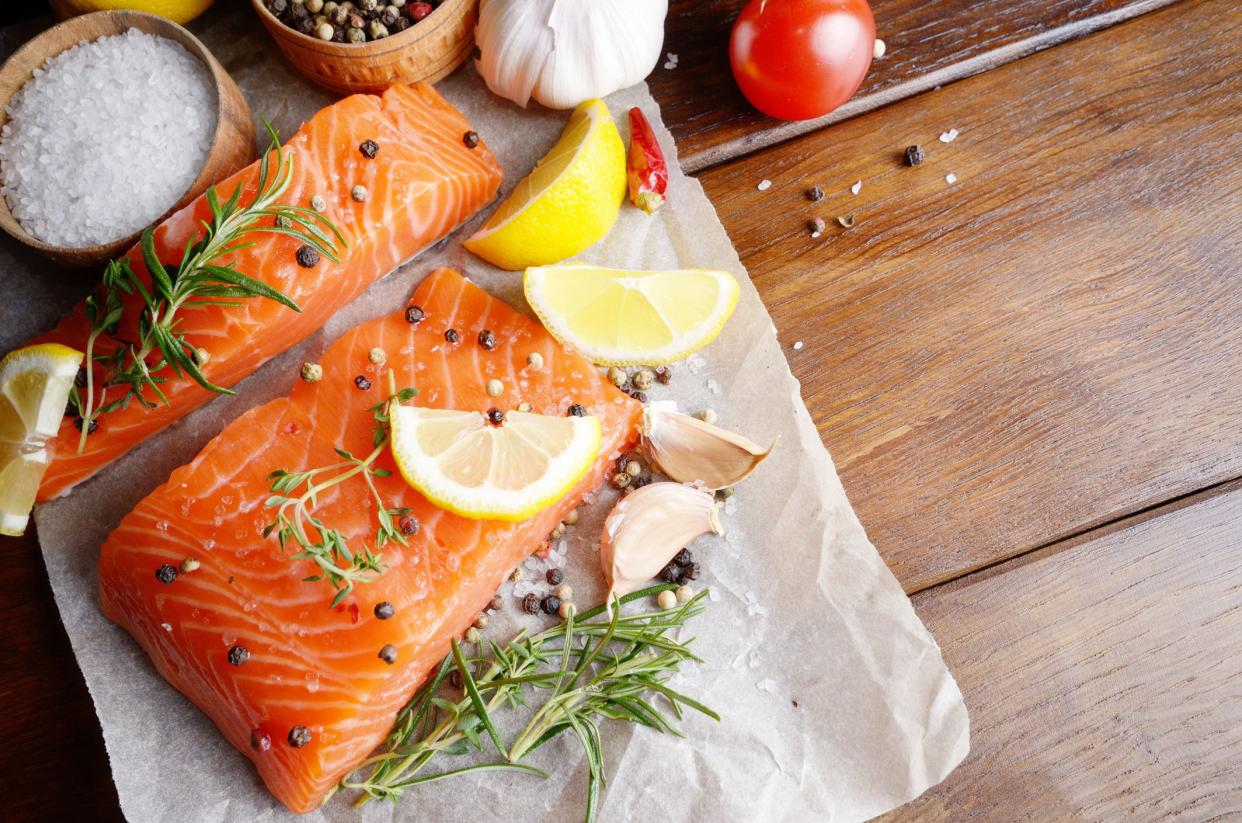
9. Seasoning Too Early
Salting or seasoning fish too early can draw out moisture through osmosis, leading to a drier final product. To avoid this, season the fish after patting it dry and right before you cook it. This will help it retain its natural juices and enhance the flavors without compromising the texture. This is especially true for delicate fish like cod, haddock, and tilapia that can become easily overcooked and turn tough.
Pro tip: Incorporate lime or lemon juice into your marinade. The acidity cuts through the briny richness of the fish to enhance its flavor while helping to remove any unwanted fishy aromas.
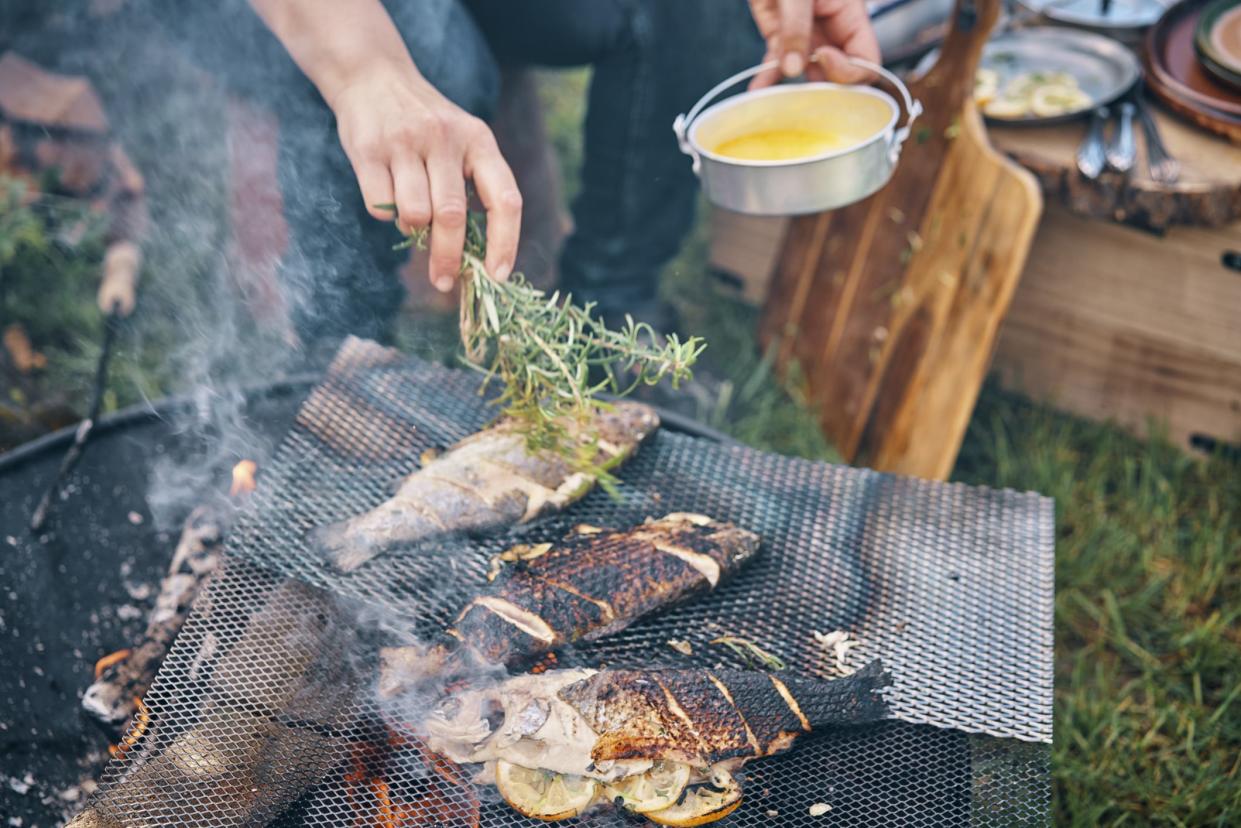
10. Choosing the Wrong Type of Fish for the Cooking Method
Not all fish are suitable for all cooking methods. For example, lean and flaky white fish like tilapia or sole can fall apart on a grill, but do well when baked or pan-fried. Fatty fish like salmon or mackerel are more versatile and sturdy and can withstand grilling and broiling. Knowing which type of fish is best for your cooking method will ensure it cooks properly to retain the most flavor and texture.
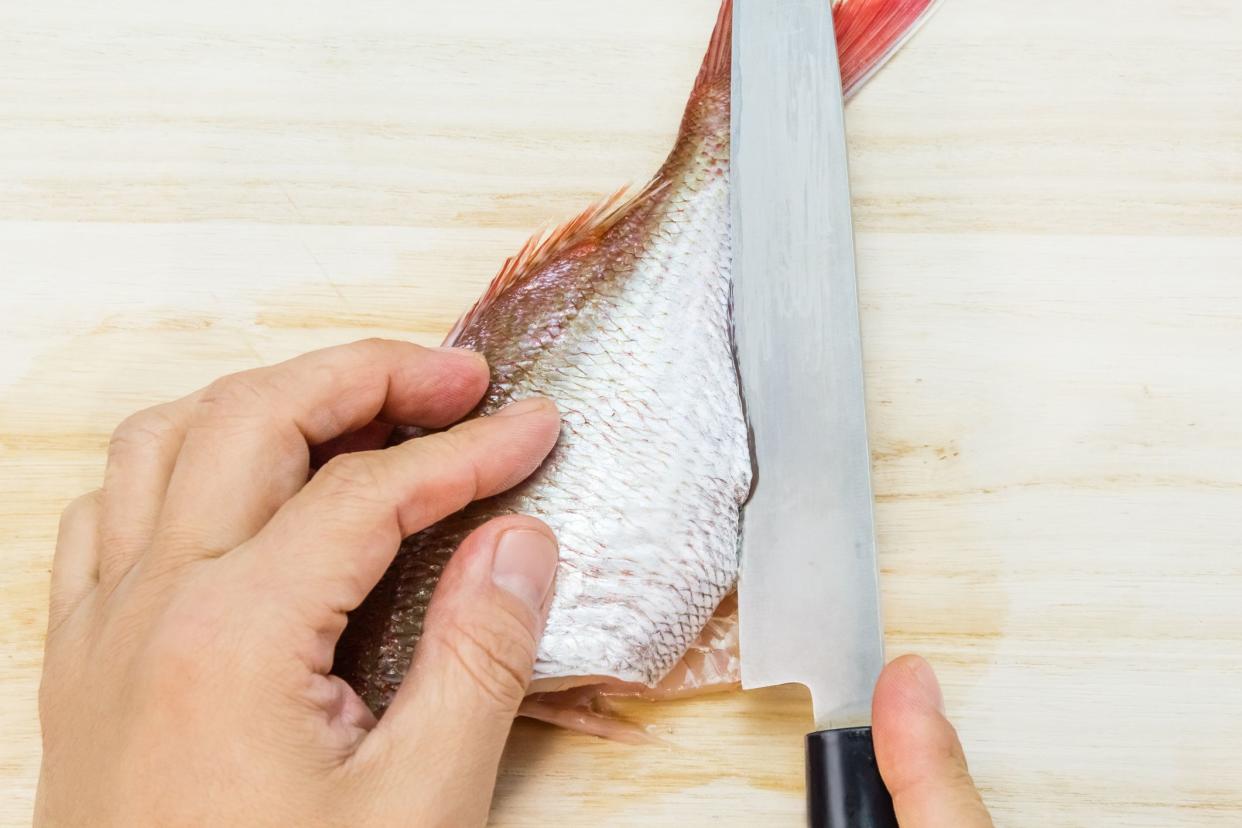
11. Forgetting To Check for Bones
Bones can be unpleasant to encounter and can pose a choking hazard, especially for children. Before marinating or seasoning your fish, run your fingers along the fillet to feel for bones, and use tweezers to remove any that you find. This step is especially important for finer-boned fish like salmon and trout.
Pro tip: After cleaning your fish, cut it into small cubes for quick dishes like stir-fries, or into fillets that can be seared whole for a beautiful presentation.
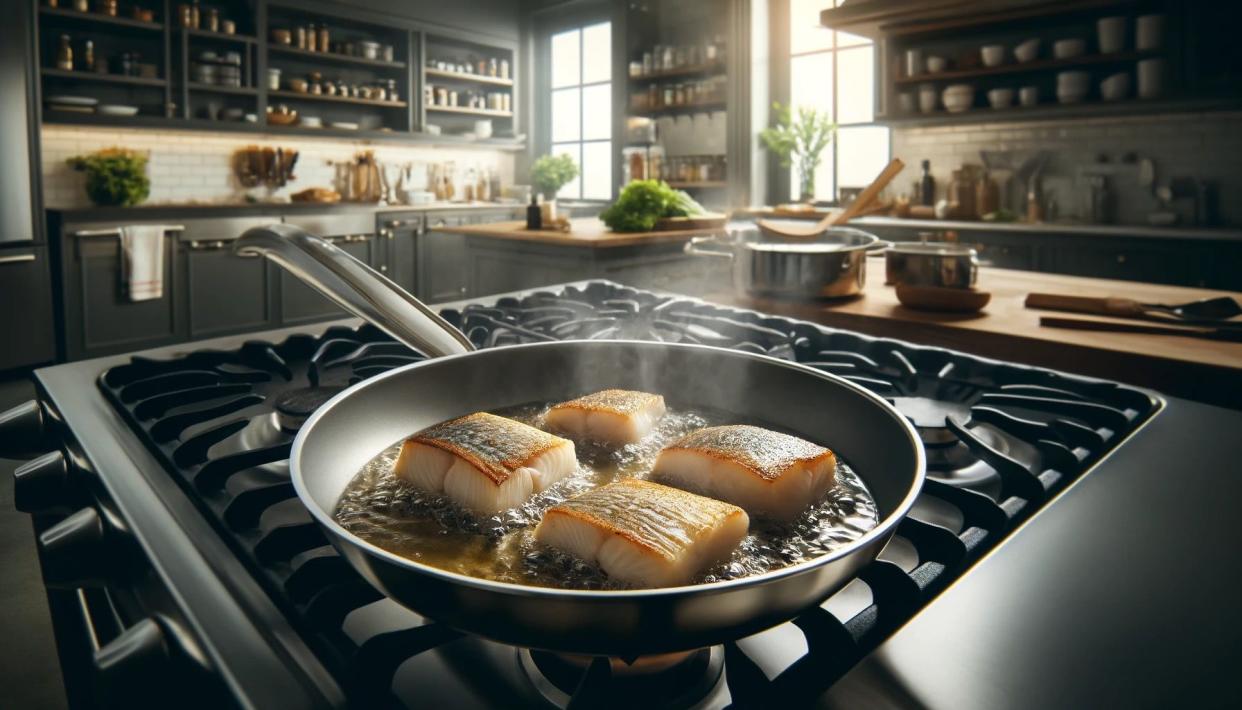
12. Ignoring Cooking Cues
Fish changes from translucent to opaque as it cooks, a visual cue that it's nearing doneness. Continuing to cook fish until it looks completely opaque throughout can result in overcooking. Instead, remove it from the heat once it's mostly opaque but still slightly translucent at the center. This will allow the carryover heat to finish the cooking process, resulting in a tender and moist cut of fish.
This article was originally published on Cheapism







